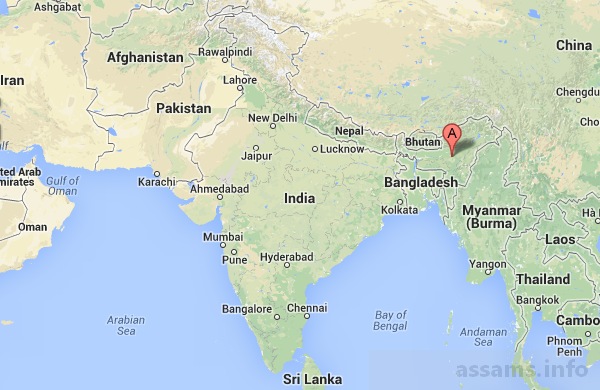All about Assam State of India
Assam is one of the most beautiful, advanced and easily accessible states in India. Assam is located in the North Eastern part of India and lies in south of the eastern Himalayas. The green state is surrounded by six northeast states of India: Arunachal Pradesh, Nagaland, Mizoram, Manipur, Meghalaya and Tripura. Assam also shares international borders with Bhutan and Bangladesh. Assam is connected to the rest of India via a narrow strip of land in West Bengal, called the Siliguri Corridor.
History:
Assam became a part of India after the British occupied the region following the Treaty of Yandaboo of 1826. Ancient Assam was known as Kamarupa. Powerful dynasties such as the Varmanas (c.350-650 AD), the Salstambhas (Xalostombho, c.655-900 AD) and the Kamarupa-Palas (c.900-1100 AD) ruled Assam till 1255 AD. Then, the Ahoms ruled Assam for nearly 600 years (1228?1826) and later Koch, a Tibeto-Burmese, established sovereignty in c.1510 AD. The Koch kingdom in western Assam and present North Bengal was at its zenith in the early reign of Naranarayana (c.1540-1587 AD). Ahom Kingdom ruled mainly in upper Assam. But their 600 years of rule is regarded as Golden period in Assam history. Among other dynasties, the Chutiyas ruled the north-eastern Assam and parts of present Arunachal Pradesh and the Kacharis ruled from Dikhow river to central and southern Assam. More about Assam History here.

Administration:
Assam is divided into 27 administrative districts. Each districts are further sub-divided into “Sub-divisions” or Mohkuma. Now, there are 49 Sub-divisions in Assam. Every district is administered from a district head quarter with the office of the District Collector, District Magistrate, Office of the District Panchayat and usually with a district court. For the revenue purposes, the districts are divided into revenue circles and mouzas; for the development projects, the districts are divided into 219 ‘development-blocks’ and for law and order these are divided into 206 police stations or thana.
Population:
Total population of Assam was 31,205,576 in 2011. There was 15,939,443 males and 15,266,133 females. Literarcy rate was 72.19 percent (77.85 % male and 63% female). Major religions are Hinduism (64.9%) and Islam (30.9%). Others include Christianity (3.7%), Sikhism, Animism, Buddhism (Khamti, Phake, Aiton etc. communities). Assamese and Bodo are the major indigenous and official languages while Bengali holds official status in the three districts in the Barak Valley and is the second most spoken language of the state (24%). There are smaller groups of people speaking Tai-Phake, Tai-Aiton, Tai-Khamti, Tai-Khamyang, Manipuri,Khasi, Garo, Hmar, Kuki, etc in different parts of the state.
Industries:
Assam is known for it’s unique Assam tea, Assam silk, huge petroleum reserves, and for its rich biodiversity and wildlife. Assam tea gardens produces about 15 percent of the world’s total tea. Assam Tea is now a brand preferred by millions worldwide for it’s unique aroma and taste. This often-neglected state of India also produces more than half of country’s petroleum.
Education:
Assam has several institutions for tertiary education and research. The major institutions are: Gauhati University, Guwahati; Dibrugarh University, Dibrugarh; Assam University, Silchar; Tezpur University, Tezpur; Assam Agricultural University, Jorhat; Indian Institute of Technology Guwahati; National Institute of Technology, Silchar; Assam Engineering College, Guwahati; Jorhat Engineering College, Jorhat; Jorhat Medical College, Jorhat; Gauhati Medical College and Hospital, Guwahati; Assam Medical College, Dibrugarh and Silchar Medical College, Silchar.
Urban Areas:
The biggest city in Assam is Guwahati, where the capital of Assam ‘Dispur’ is located. After Guwahati, Silchar is the second largest and important city in the state. Other important cities in Assam are Dibrugarh, Jorhat, Golaghat, Tinsukia, Sibsagar, Tezpur, Nagaon, Lakhimpur and Bongaigaon. Duliajan, Digboi, Namrup, Moran, Bongaigaon, Numaligarh, Jogighopa Rangia, etc., are some of the major industrial towns in the state.
#assams.info
